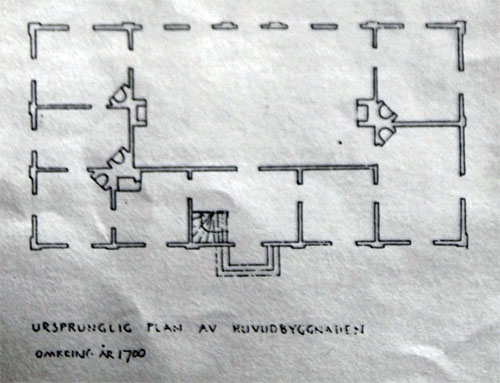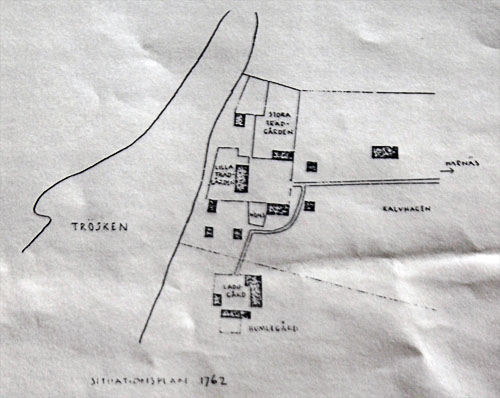Historical data on Harnäs mill and Fleräng Manor
A Carolin wooden castle

1659
Mine inspector Claes Depken (later knighted Ankarström) received privileges for a blast furnace at Harnäs.
1662
Depken got permission to erect a tilt hammer at Harnäs to provide Älvkarleö mill with iron. The operation of these mills was soon handed over to David Leijel, one of four brothers who emigrated from Scotland in 1638 and started a trading business in Stockholm.

Söderfors och Harnäs, för tackjärn Harnäs för tackjärn
1692
David Leijel married Margareta Lundia.
1695
Fleränge (one of many different formulations) manor was built. There most of their ten children were born here.
{rapidgallery thumbwidth:500;}bilder/locations/5{/rapidgallery}
{rapidgallery thumbwidth:80;}bilder/locations/2{/rapidgallery}


1717
The dynasty was naturalized.
1719
The dynasty Leijel was introduced at the House of Nobility, the same line as the ancient Scottish clan Lyel.
1719
The mill “brandskattades” by the Russians, who, however, did not find the mansion, because the owner had camouflaged the road to Fleräng which was "half fjärdings” way from Harnäs" or as it was said in those days "he had again shut, chopped trees and camouflaged the road so that they did not find the mansion".
1727
David Leijel died and the widow stayed at Fleräng.
1737
His widow died, the children inherited and most of whom lived at Fleräng until their death.
1766
Was the first major change in the manor’s interior. The large hall was divided by a partition.
1772
Harnäs was sold to merchant Thomas Tottie, Stockholm, while the mansion remained the family home for the Leijel family.
1812
The mill was sold at an auction after Thomas Tottie by Johan Reinhold Steenman (his wife born Tottie) and wife Caroline Dahlsson (born Tottie) to Lieutenant Colonel Baron Carl af Nordin. The purchase was transferred immediately to Cavalry Captain Count Gustaf af Ugglas.
1813
The manor was sold by Carl Johan Leijel to Baron Gustaf af Ugglas with the proviso that he, and after him his nephew General Carl Hård as long as they lived would have the mansion at their disposal.
1817
Carl Johan Leijel died.
1840
General Hård died, a warrior from Uppland, who after several war expeditions settled down on Fleräng, where he collected paintings and books which he bequeathed to the University of Uppsala.
1882
Harnäs mill was bought by Söderfors Bruks Ltd partly to export iron and partly to get raw materials to the forge in Älvkarleby, which also belonged to Söderfors. Thus resurfaced Claes Depken's original thought about Harnäs mill providing Älvkarleö with iron.
1883
The mansion was rented out for ten years to engineer Svedberg of Harnäs mill.
1884
The future Nobel laureate in Chemistry The (Theodor) Svedberg was born at Fleräng.
1887
The lease was transferred to Thv Olrog, a trading company based in Stockholm but with facilities in Skutskär and Gävle.
1897
The lease was renewed for 50 years with Thv Olrog, which in shipping seasons moved its office in Stockholm to Skutskär, while he and his family lived at Fleräng.
1908
Harnäs was bought by Korsnäs Sågverks AB.
1911
Ceased operations at the mill and just a few years later the blast furnace was demolished, but the idyllic ironworks street is preserved.
1937
The fifty-year lease lifted ten years before the expiry of the contract partly because Korsn Sågverks Ltd wanted to occupy the mansion for their CEO Wilhelm Ekman as a summer home, and grant the estate as resort for forest management. Thv Olrog was compensated amongst other things by land.
1951
The mansion was renovated, design by architect Nils C:sin and Ernst Hawerman.
1963
The mansion was bought by Gertrude and Hartwig Hermansson, continuously nurtured and equipped it.
1987
The current owners were awarded Gävle municipality first Architectural prize.
Source: Document from Håkan Eriksson
|




